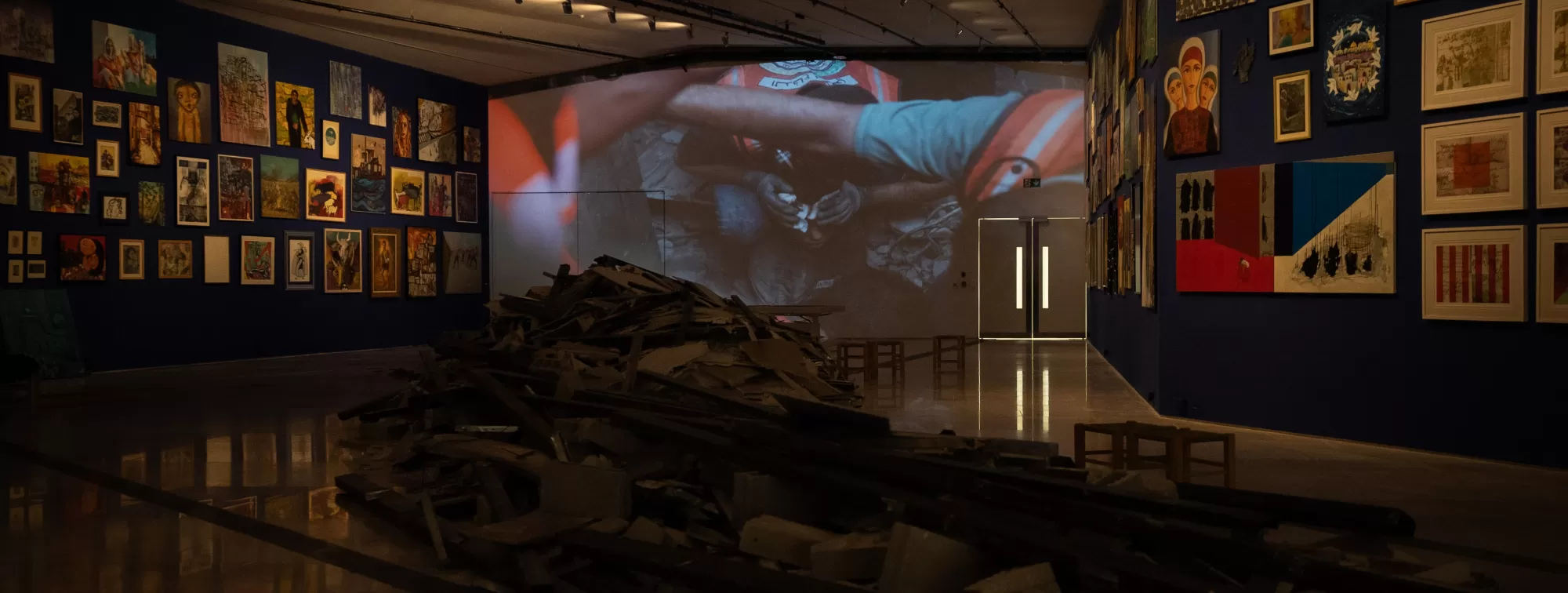Palestinian Museum Reopens
By Camilla Alvarez-Chow

Installation view of "This is Not an Exhibition" at the Palestinian Museum, 2024. Courtesy the Palestinian Museum.
After months of closure due to the ongoing war between Israel and Hamas, the Palestinian Museum in Birzeit, a town located in the central West Bank, reopened on February 11 with three exhibitions. As a result of the violence, the majority of art spaces in Gaza have been reduced to rubble by Israeli air strikes, as have schools, hospitals, and places of worship. The Palestinian Museum stated that its reopening “stand[s] against the atrocities and systematic annihilation of Gaza.”
Despite their venues’ destruction last December, Eltiqa Art Gallery and Shababek Gallery curated over 280 artworks by more than 100 Gazan artists for “This is Not an Exhibition” in the museum’s main exhibition hall. The artworks are on loan from private Palestinian collectors and galleries, featuring works across various media from the 1970s to the present. Participating artists include painter, illustrator, and author of children’s books Malak Mattar; visual artist Hazem Harb; and artist and scholar Aissa Deebi, along with artists who recently passed away due to an Israeli airstrike on October 13, such as Mohammed Sami Qariqa, Shad Nafez Saudi, Fuad Abu Khammash, and Heba Zagout.
In the museum’s Glass Gallery, Gaza-born artist Tayseer Barakat’s solo exhibition “The Disappeared” showcases canvas paintings that are organized into groups of Astray, Shades, and A World in the Making. Each depicts indistinguishable humanoid characters in dark worlds filled with colors of charred black, brown rubble, and ash gray. The landscapes may look desolate, but the occasional warm hues of orange and yellow, along with calm blues, recall the desire for home and peace.
The inaugural showcase “Women of Gaza” is an ethnographic display located in the museum’s lobby that aims to preserve Palestine’s cultural heritage, including tatreez (embroidery). Palestinian embroidery is an artistic tradition passed down through generations, characterized by hand-stitching patterns and motifs with brightly colored thread on clothing such as the thobe (a loose-fitting dress). On display are not only thobes but also Bedouin headdresses and burqas, as well as jewelry found in the Gaza area. In 2021, the tatreez was added to UNESCO’s intangible cultural heritage list.
The Palestinian Museum’s program manager Obour Hashash told Hyperallergic that the exhibition will continue for several months, even “after the war ends.” Hashash also stated that the museum will issue an open call to collectors of Gazan art across the West Bank to continue to add more works to the exhibition in an effort to stand in solidarity against the regional devastation.
This year the museum plans to establish a rotating series of temporary shows, mostly exhibiting heritage objects from its permanent collection, and occasionally hosting collections from partner museums or collectors.
Camilla Alvarez-Chow is an editorial assistant at ArtAsiaPacific.







